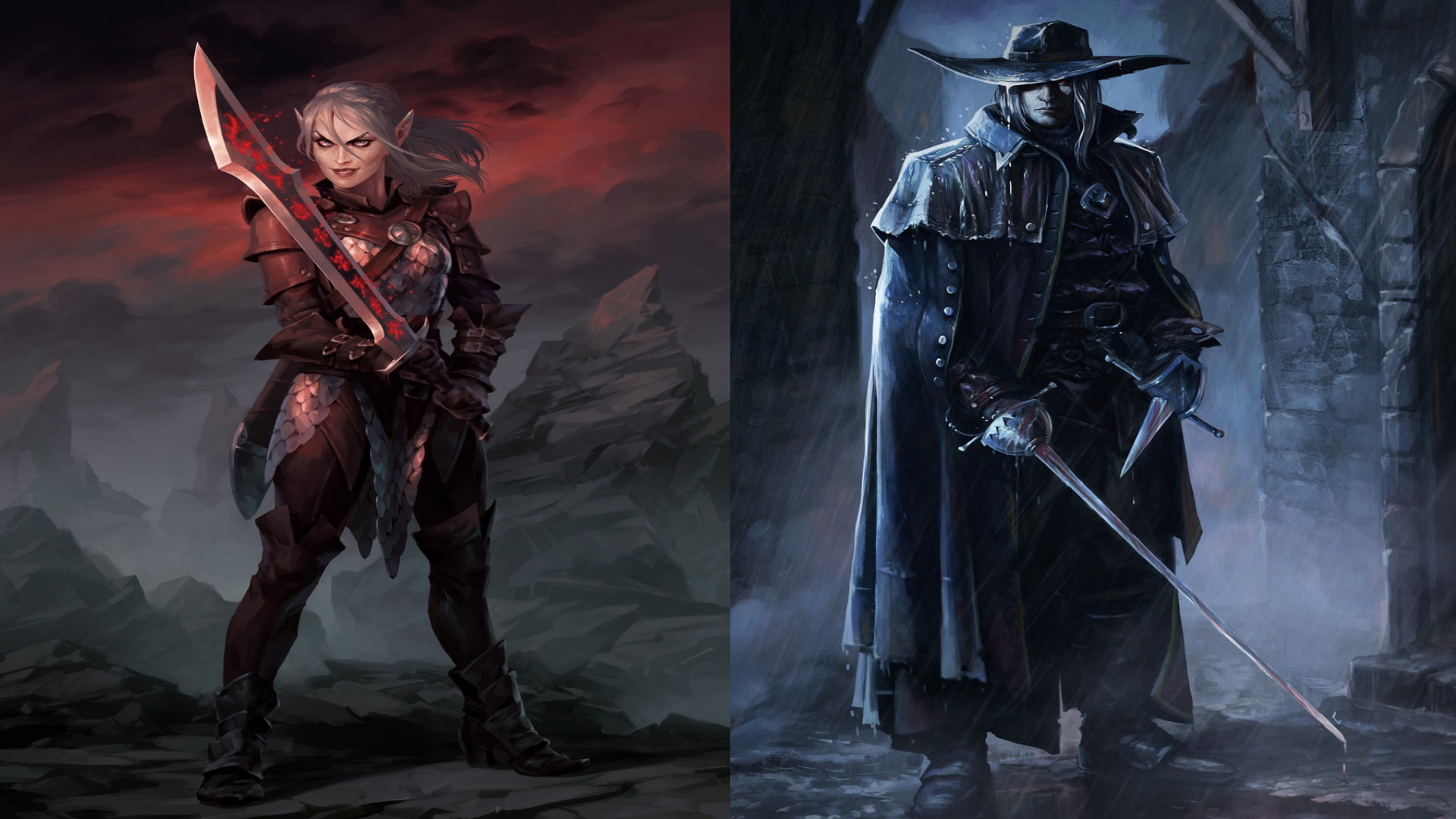One of the most important questions you’ll have in Pathfinder: Wrath of the Righteous is: “Which class should I pick for my main character?” Indeed, you’ll probably play for a few hours, change your mind, and restart from scratch to choose something else. Here’s our Pathfinder: Wrath of the Righteous guide to help you choose the best class for your main character, as well as the archetypes or subclasses. We’ve also added tips based on party composition/companions and the player’s relative experience with CRPGs (i.e., beginners vs. veterans).
Note: For more information, check out our Pathfinder: Wrath of the Righteous guides and features hub. Likewise, you can take a look at our character creation guide to help you get started. Also, we suggest viewing our companion recruitment guide and race options guide as these provide additional tips that will help determine how you’ll build your character.
Pathfinder: Wrath of the Righteous – Class guide — The best class options for your main character
The role of your companions vs. your chosen class
Technically, all classes in Pathfinder: Wrath of the Righteous can function well enough, but some are better suited for certain roles, player capabilities, and team compositions. It’s also why you’ll want to look at the companions you’ll recruit throughout the campaign as the first five you’ll get — Seelah, Camellia, Lann (or Wenduag), Woljif, and Ember — will determine how effective your party would be, as well as your character class’ place in it.
- Would you prefer to have another tanky character who can hold the frontline alongside Seelah?
- Or are you more comfortable sniping enemies just like Lann?
- Perhaps you want a supporting role so you can buff teammates?
Experience: Beginners vs. veterans
Of course, another factor to consider is your experience when it comes to CRPGs and tabletop RPGs:
- As a newcomer, you’re better off trying classes with a difficulty rating of 1 (seen when you click on a particular class’ description). These options are more straightforward and can be used with relative ease. Several melee classes can be considered beginner-friendly.
- Conversely, there are those that can be considered absolute nightmares if you’re just trying out the game. Most casters fall under this category. It’s not just because you need to take note of spell levels and how many times they can be cast per day. It’s also because you’ll need to look at additional means of boosting your spell school and the elemental resistances of enemies.
- There are hybrid and ranged classes that offer a healthy middle ground. The only exception is the Kineticist which, alongside the Magus, is the only class option with a difficulty rating of 5.
In any case, you can refer to the pages below for the parts that you need help with:
Note 1: Before I forget, bear in mind that Pathfinder: Wrath of the Righteous allows you to multiclass or select perks from different classes whenever you level up. As such, even if you started out as a Monk at level 1, you could pick something from, say, the Inquisitor class at level 2. The abilities, perks, feats, spells, and skills you obtain are based on how each class would progress at their level.
Note 2: We have a separate guide linked above concerning mounts, animal companions, familiars, and summons, as well as the classes/archetypes that can make the most out of them.
PC Invasion – FeedDDD
Source link
Related Post:
- Wrath of the Righteous — The best prestige classes
- What is the Best Class For You? | Pathfinder Wrath of the Righteous
- Wrath of the Righteous — The best races to choose from
- Best Rainbow Six Siege operators: Who to pick in 2024
- The best Biomutant classes and breeds
- Diablo 2 Resurrected classes and best character builds
- Wrath of the Righteous Coming to Xbox Game Pass
- Stardew Valley, Aragami 2, Pathfinder: Wrath of the Righteous and Evil Genius 2 coming to Xbox Game Pass
- Pathfinder Wrath of the Righteous Console Release Confirmed for March 1st 2024
- Top RPG News Of The Week: August 15th (Diablo 2, Pathfinder Wrath of the Righteous, Tales of Arise and More!)

